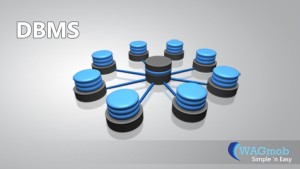 71. Which part of the RDBMS takes care of the data dictionary? How?
71. Which part of the RDBMS takes care of the data dictionary? How?
Data dictionary is a set of tables and database objects that is stored in a special area of the database and maintained exclusively by the kernel.
72. What is the job of the information stored in data-dictionary?
The information in the data dictionary validates the existence of the objects, provides access to them, and maps the actual physical storage location.
73. How do you communicate with an RDBMS?
You communicate with an RDBMS using Structured Query Language (SQL).
74. Define SQL and state the differences between SQL and other conventional programming Languages.
SQL is a nonprocedural language that is designed specifically for data access operations on normalized relational database structures. The primary difference between SQL and other conventional programming languages is that SQL statements specify what data operations should be performed rather than how to perform them.
75. Name the three major set of files on disk that compose a database in Oracle.
There are three major sets of files on disk that compose a database. All the files are binary. These are
1.) Database files
2.) Control files
3.) Redo logs
The most important of these are the database files where the actual data resides. The control files and the redo logs support the functioning of the architecture itself. All three sets of files must be present, open, and available to Oracle for any data on the database to be useable. Without these files, you cannot access the database, and the database administrator might have to recover some or all of the database using a backup, if there is one.
76. What is database Trigger?
A database trigger is a PL/SQL block that can defined to automatically execute for insert, update, and delete statements against a table. The trigger can e defined to execute once for the entire statement or once for every row that is inserted, updated, or deleted. For any one table, there are twelve events for which you can define database triggers. A database trigger can call database procedures that are also written in PL/SQL.
77. What are stored-procedures? And what are the advantages of using them?
Stored procedures are database objects that perform a user defined operation. A stored procedure can have a set of compound SQL statements. A stored procedure executes the SQL commands and returns the result to the client. Stored procedures are used to reduce network traffic.
78. What is Storage Manager?
It is a program module that provides the interface between the low-level data stored in database, application
79. What is Buffer Manager?
It is a program module, which is responsible for fetching data from disk storage into main memory and deciding what data to be cache in memory.
80. What is Transaction Manager?
It is a program module, which ensures that database, remains in a consistent state despite system failures and concurrent transaction execution proceeds without conflicting.